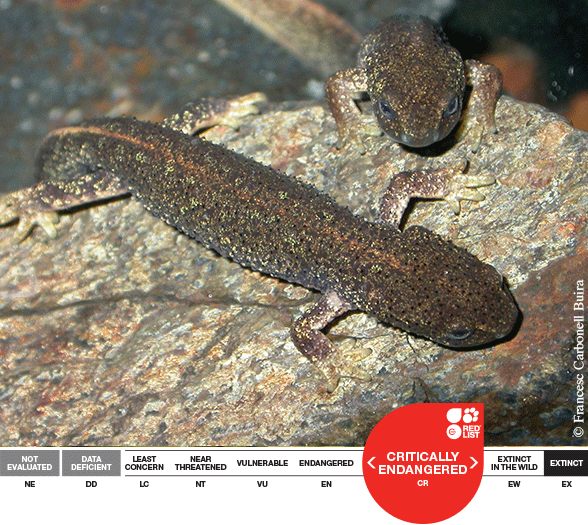
The Montseny Brook Newt, Calotriton arnoldi, is endemic to the El Montseny mountain massif in the El Montseny Natural Park and Biosphere Reserve in northeastern Spain. It is only known from seven streams between 700 and 1200 m above sea level, all within the confines of the Park. Amazingly, this species has never been observed in terrestrial habitats, meaning that dispersal and breeding with individuals in other streams may require an individual to travel down one tributary of the stream and up another. This may also means that each stream has high genetic distinctness from other streams. The Montseny Brook Newt is listed as ‘Critically Endangered’ on the IUCN Redlist of Threatened Species.
A major threat to this species is the drying out of mountain streams. Much of the water is being extracted and sold as bottled water. The distribution of the Montseny Brook Newt is greatly reduced because of this. Also, its most favored woodland habitat is being replaced in some areas by holm oak forests, possibly due to global warming.
Conservation efforts include a captive breeding program started in 2007 by the Catalan Government Wildlife Service. Conservation efforts within the Montseny Natural Park include managing water extraction, permeable pathways that are sensitive to the local population and supporting research and monitoring, although more research is still needed to determine additional management options. Strong measures are especially needed to keep the mountain streams from dying out. The species is protected under Appendix II of the Bern Convention and Annex IV of the EU Habitats Directive.
